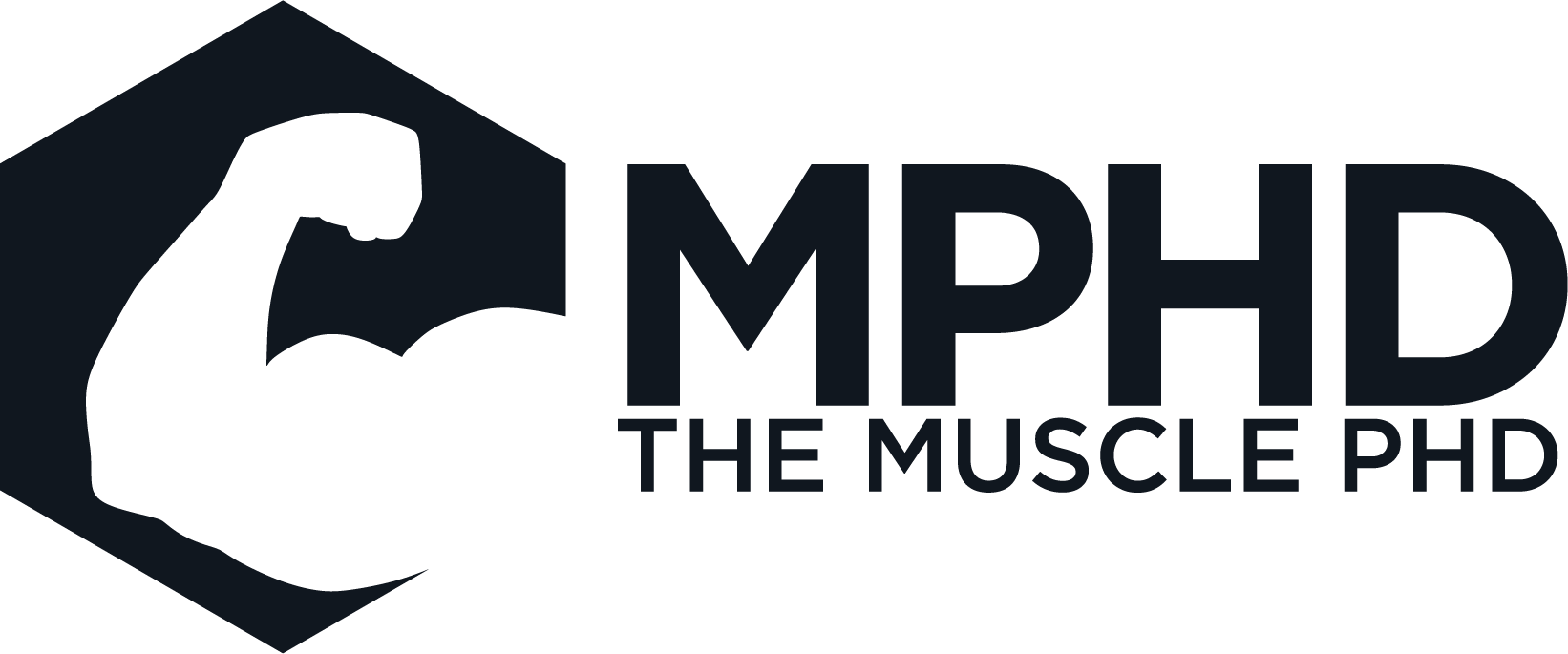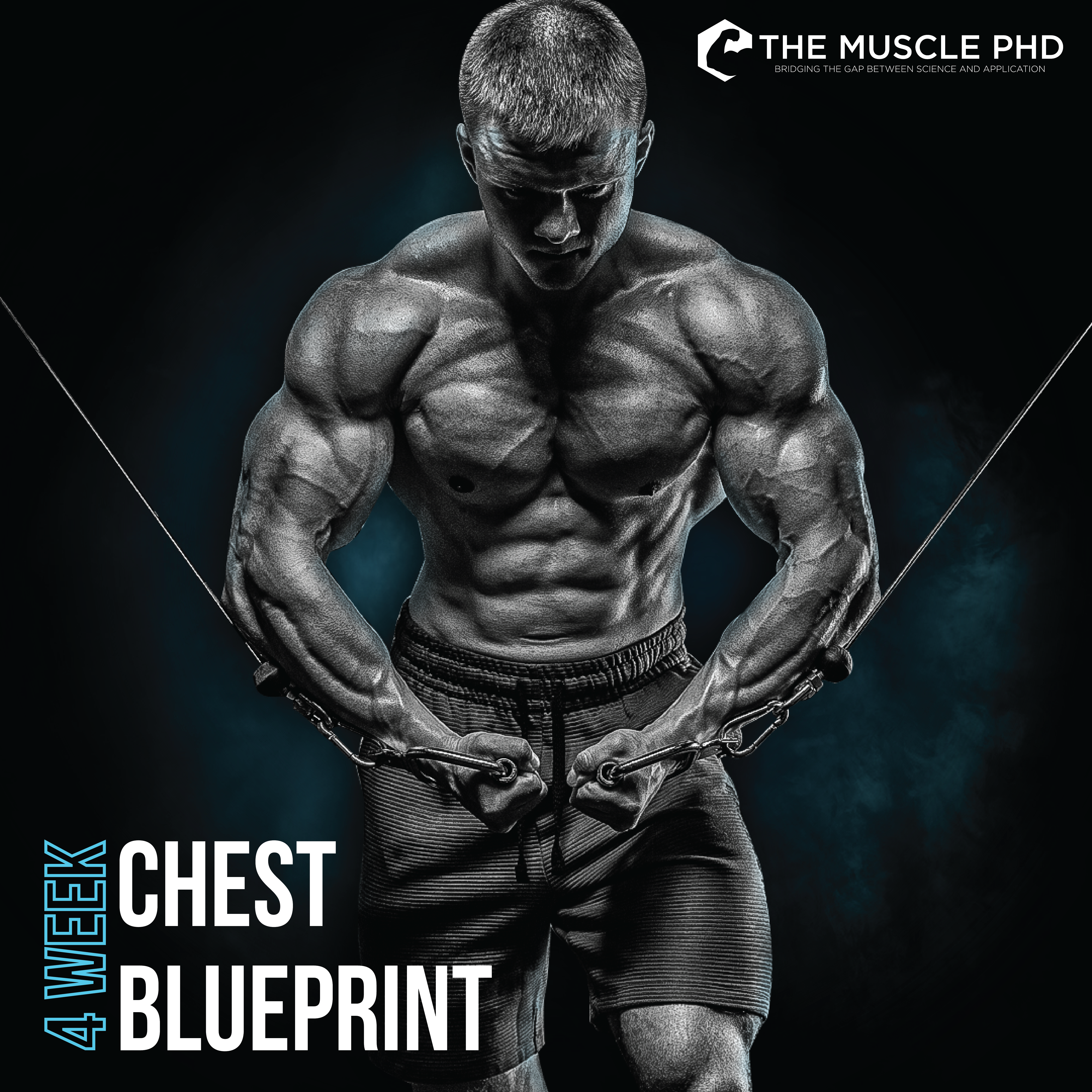Introduction
Ask any bodybuilder what their go-to fat loss strategy is and many of them will tell you they prefer fasted cardio first thing in the morning. In addition to this oft-utilized fat loss strategy, we get a ton of questions about fasted resistance training and how that may affect strength and size gains. Now, we’re not going to make a, “how to,” piece here with all kinds of information on fasting. In this piece, we’re simply going to examine the literature behind training while fasted. Let’s dig into what the science says on this topic and how you might use some of these strategies in your own training.
Benefits or Nah?
 The positive evidence for performing cardio in a fasted state certainly exists. Studies show that fasted cardio can improve insulin sensitivity and both glucose and fatty acid transport (10,18,19). Studies also show that fat oxidation is greater in low intensity exercise, such as steady state cardio, when performed in a fasted state (1). Other studies show that fasted resistance training results in similar gains to fed resistance training (9,10,17). This all sounds great – case closed, right?
The positive evidence for performing cardio in a fasted state certainly exists. Studies show that fasted cardio can improve insulin sensitivity and both glucose and fatty acid transport (10,18,19). Studies also show that fat oxidation is greater in low intensity exercise, such as steady state cardio, when performed in a fasted state (1). Other studies show that fasted resistance training results in similar gains to fed resistance training (9,10,17). This all sounds great – case closed, right?
Not so fast. While fat oxidation certainly is greater during steady state exercise, especially in fasted states, it’s important to remember that a good portion of this fat burned for fuel is derived from intramuscular triglyceride stores, not adipose tissue (14). So the occasional fasted cardio session really isn’t going to do much for your physique, however, consistent fasted cardio might have more benefits as you’ll develop long-term adaptations to burning fat for fuel during training.
Furthermore, studies show that subjects training in a fed state can workout at higher intensities for longer time periods than fasted subjects (13). While this situation doesn’t represent the individual undergoing fasted training on purpose, it’s an interesting component when considering performance and calorie burning in general. Greater workout intensities lead to increased calorie burning even after the workout is finished – this is termed, “excess post-exercise oxygen consumption,” or, “EPOC.” Studies show that subjects training in a fed state experience higher levels of EPOC than fasted subjects (2,6). Obviously, workout intensity could play a large role in this, but is there another factor?
We know that fasted training can increase the reliance on fat for fuel (1) but to improve body composition, you need to consider fat burning throughout the entire day and not just your workout. Interestingly enough, studies show that increased fat oxidation during exercise leads to a greater dependence on carbohydrates for fuel throughout the rest of the day, and vice-versa (7,11,14). Therefore, if you burn a ton of fat during your workout, you’re going to primarily rely on carbs for energy the rest of the day. In that same vein, burning a ton of carbs during your workout increases fat oxidation for the remainder of the day (11). Would you rather have one hour of high fat burning and 23-hours of preferential carb reliance or vice-versa?
Takeaways
 While much of what you just read certainly sounds negative, studies don’t show any significant differences when examining long term changes in body composition in subjects performing fasted and fed exercise (5,8,10,15,17). So even if training while fasted may have some negative acute findings, this doesn’t appear to negatively impact long-term exercise adaptations. One study did find an important benefit from fasted training when considering a, “bulking,” style diet. Subjects who trained fasted in this study did not gain nearly as much body fat as subjects who trained in a fed state when both subject groups ate a diet at 30% above maintenance calories (18). This may be, in part, due to the improved insulin sensitivity and nutrient transport that we see with fasted exercise.
While much of what you just read certainly sounds negative, studies don’t show any significant differences when examining long term changes in body composition in subjects performing fasted and fed exercise (5,8,10,15,17). So even if training while fasted may have some negative acute findings, this doesn’t appear to negatively impact long-term exercise adaptations. One study did find an important benefit from fasted training when considering a, “bulking,” style diet. Subjects who trained fasted in this study did not gain nearly as much body fat as subjects who trained in a fed state when both subject groups ate a diet at 30% above maintenance calories (18). This may be, in part, due to the improved insulin sensitivity and nutrient transport that we see with fasted exercise.
Now, it’s important to disclose the elephant in the room – some people simply prefer to train on an empty stomach! This is a perfectly good reason to train fasted; even though the science doesn’t always support fasted training over fed training, science does support training in general. And if training on an empty stomach nets you a better workout, so be it. Performing resistance training while fasting can still lead to gains (9) and even equivalent muscle and strength gains compared to fed training (10,17).
So if you prefer training fasted, what’s the best way to do so? If your goal is to still perform well during your workout, I would strongly recommend drinking water. I know some will also preach about water fasts but, frankly, there’s no positive effect that dehydration might have on exercise performance or adaptations (17). Second, it’s a good idea to place your workout towards the end of your fast so that you can get your post-workout meal in soon after. Whether you’re a morning trainer or evening trainer, try to space your fast so that your workout ends up at the tail end of it. Studies show that training while fasted may actually improve the glycogen replenishing effect and anabolic response of a post-workout meal (4). These effects are probably derived from greater glycogen depletion before the meal, however, improved insulin sensitivity and nutrient transport also play a role in this response and are direct effects from fasted training.
Conclusion
 In conclusion, fasted training can definitely have some benefits – especially for individuals on ketogenic diets, people with insulin sensitivity issues, or if you’re consuming a high calorie diet. Fasted exercise is a great way to keep insulin levels low (10) and it can even help people starting out on a keto diet as fasted training increases the reliance on fat for fuel during exercise (1). Fasted training also appears to combat fat gain during high calorie diets like bulking cycles (18). For those of you not worried about any of these issues, fasted training doesn’t appear to have any specific long-term effects when compared to fed training when considering exercise adaptations – overall health markers are outside the scope of this piece. It all boils down to personal preference and if you’re performing intermittent fasting and/or other variables. I personally train fasted in the morning right after getting up because it’s convenient for me; frankly, I don’t want to have to wake up earlier to eat something before training. My only reason for fasted training is that I’m lazy. And that’s a perfectly good reason to use.
In conclusion, fasted training can definitely have some benefits – especially for individuals on ketogenic diets, people with insulin sensitivity issues, or if you’re consuming a high calorie diet. Fasted exercise is a great way to keep insulin levels low (10) and it can even help people starting out on a keto diet as fasted training increases the reliance on fat for fuel during exercise (1). Fasted training also appears to combat fat gain during high calorie diets like bulking cycles (18). For those of you not worried about any of these issues, fasted training doesn’t appear to have any specific long-term effects when compared to fed training when considering exercise adaptations – overall health markers are outside the scope of this piece. It all boils down to personal preference and if you’re performing intermittent fasting and/or other variables. I personally train fasted in the morning right after getting up because it’s convenient for me; frankly, I don’t want to have to wake up earlier to eat something before training. My only reason for fasted training is that I’m lazy. And that’s a perfectly good reason to use.
References
- Bergman, B. C., & Brooks, G. A. (1999). Respiratory gas-exchange ratios during graded exercise in fed and fasted trained and untrained men. Journal of Applied Physiology, 86(2), 479-487.
- Davis, J. M., Sadri, S., Sargent, R. G., & Ward, D. (1989). Weight control and calorie expenditure: thermogenic effects of pre-prandial and post-prandial exercise. Addictive Behaviors, 14(3), 347-351.
- DeFronzo, R. A., Ferrannini, E., Sato, Y., Felig, P., & Wahren, J. (1981). Synergistic interaction between exercise and insulin on peripheral glucose uptake. The Journal of Clinical Investigation, 68(6), 1468-1474.
- Deldicque, L., De Bock, K., Maris, M., Ramaekers, M., Nielens, H., Francaux, M., & Hespel, P. (2010). Increased p70 s6k phosphorylation during intake of a protein–carbohydrate drink following resistance exercise in the fasted state. European Journal of Applied Physiology, 108(4), 791-800.
- Gillen, J. B., Percival, M. E., Ludzki, A., Tarnopolsky, M. A., & Gibala, M. J. (2013). Interval training in the fed or fasted state improves body composition and muscle oxidative capacity in overweight women. Obesity, 21(11), 2249-2255.
- Goben, K. W., Sforzo, G. A., & Frye, P. A. (1992). Exercise Intensity and the Thermic Effect of Food. International Journal of Sport Nutrition, 2(1), 87-95.
- Hansen, K., Shriver, T., & Schoeller, D. (2005). The effects of exercise on the storage and oxidation of dietary fat. Sports Medicine, 35(5), 363-373.
- Helms, E. R., Fitschen, P. J., Aragon, A. A., Cronin, J., & Schoenfeld, B. J. (2015). Recommendations for natural bodybuilding contest preparation: resistance and cardiovascular training. The Journal of Sports Medicine and Physical Fitness.
- Kim, P. L., Staron, R. S., & Phillips, S. M. (2005). Fasted‐state skeletal muscle protein synthesis after resistance exercise is altered with training. The Journal of Physiology, 568(1), 283-290.
- Moore, D. R., Del Bel, N. C., Nizi, K. I., Hartman, J. W., Tang, J. E., Armstrong, D., & Phillips, S. M. (2007). Resistance training reduces fasted-and fed-state leucine turnover and increases dietary nitrogen retention in previously untrained young men. The Journal of Nutrition, 137(4), 985-991.
- Paoli, A., Marcolin, G., Zonin, F., Neri, M., Sivieri, A., & Pacelli, Q. F. (2011). Exercising fasting or fed to enhance fat loss? Influence of food intake on respiratory ratio and excess postexercise oxygen consumption after a bout of endurance training. International Journal of Sport Nutrition and Exercise Metabolism, 21(1), 48-54.
- Robinson, S. L., Lambeth-Mansell, A., Gillibrand, G., Smith-Ryan, A., & Bannock, L. (2015). A nutrition and conditioning intervention for natural bodybuilding contest preparation: case study. Journal of the International Society of Sports Nutrition, 12(1), 20.
- Schabort, E. J., Bosch, A. N., Weltan, S. M., & Noakes, T. D. (1999). The effect of a preexercise meal on time to fatigue during prolonged cycling exercise. Medicine and Science in Sports and Exercise, 31(3), 464-471.
- Schoenfeld, B. (2011). Does cardio after an overnight fast maximize fat loss? Strength & Conditioning Journal, 33(1), 23-25.
- Schoenfeld, B. J., Aragon, A. A., Wilborn, C. D., Krieger, J. W., & Sonmez, G. T. (2014). Body composition changes associated with fasted versus non-fasted aerobic exercise. Journal of the International Society of Sports Nutrition, 11(1), 54.
- Tessari, P., Garibotto, G., Inchiostro, S., Robaudo, C., Saffioti, S., Vettore, M., … & Deferrari, G. (1996). Kidney, splanchnic, and leg protein turnover in humans. Insight from leucine and phenylalanine kinetics. The Journal of Clinical Investigation, 98(6), 1481-1492.
- Trabelsi, K., Stannard, S. R., Ghlissi, Z., Maughan, R. J., Kallel, C., Jamoussi, K., … & Hakim, A. (2013). Effect of fed-versus fasted state resistance training during Ramadan on body composition and selected metabolic parameters in bodybuilders. Journal of the International Society of Sports Nutrition, 10(1), 23.
- Van Proeyen, K., Szlufcik, K., Nielens, H., Pelgrim, K., Deldicque, L., Hesselink, M., … & Hespel, P. (2010). Training in the fasted state improves glucose tolerance during fat‐rich diet. The Journal of Physiology, 588(21), 4289-4302.
- Van Proeyen, K., Szlufcik, K., Nielens, H., Ramaekers, M., & Hespel, P. J. (2010). Beneficial metabolic adaptations due to endurance exercise training in the fasted state. American Journal of Physiology-Heart and Circulatory Physiology.
From being a mediocre athlete, to professional powerlifter and strength coach, and now to researcher and writer, Charlie combines education and experience in the effort to help Bridge the Gap Between Science and Application. Charlie performs double duty by being the Content Manager for The Muscle PhD as well as the Director of Human Performance at the Applied Science and Performance Institute in Tampa, FL. To appease the nerds, Charlie is a PhD candidate in Human Performance with a master’s degree in Kinesiology and a bachelor’s degree in Exercise Science. For more alphabet soup, Charlie is also a Certified Strength and Conditioning Specialist (CSCS), an ACSM-certified Exercise Physiologist (ACSM-EP), and a USA Weightlifting-certified performance coach (USAW).




